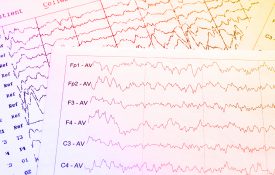-
New Research From Psychological Science
Read about the latest research published in Psychological Science: White Matter Morphometric Changes Uniquely Predict Children's Reading Acquisition Chelsea A. Myers, Maaike Vandermosten, Emily A. Farris, Roeland Hancock, Paul Gimenez, Jessica M. Black, Brandi Casto, Miroslav Draho, Mandeep Tumber, Robert L. Hendren, Charles Hulme, and Fumiko Hoeft Researchers have found several predictors of early reading ability, including family history and phonological awareness. In this study, the researchers examined whether variations in structural brain development could also serve as an early predictor of reading ability.
-

Brain Wave May Be Used to Detect What People Have Seen, Recognize
Brain activity can be used to tell whether someone recognizes details they encountered in normal, daily life, which may have implications for criminal investigations and use in courtrooms.
-

Brief Intervention May Prevent Increased Risk of Depression in Teens
A one-time intervention that educates teens about the changeable nature of personality traits may prevent an increase in depressive symptoms often seen during the transition to high school.
-
New Research From Psychological Science
Read about the latest research published in Psychological Science: Early Experience Affects the Strength of Vigilance for Threat in Rhesus Monkey Infants Tara M. Mandalaywala, Karen J. Parker, and Dario Maestripieri Research has suggested that the cognitive bias to threatening stimuli (i.e., attention toward and vigilance for threat) displayed by adult human and nonhuman primates may arise in part from early experiences. The researchers measured 3- and 9-month-old infant rhesus macaques' cognitive bias to threat by measuring their eye gaze in response to pictures of neutral and threatening macaque faces.
-

New Insights Into Eyewitness Memory From Groundbreaking Replication Initiative
A research replication initiative confirms earlier findings, showing that asking witnesses to provide a written description of a suspect can impair their ability to select that suspect from a lineup — the so-called “verbal overshadowing” effect.
-
Shared Pain Brings People Together
What doesn’t kill us may make us stronger as a group, according to findings from new research published in Psychological Science, a journal of the Association for Psychological Science. The research suggests that, despite its unpleasantness, pain may actually have positive social consequences, acting as a sort of “social glue” that fosters cohesion and solidarity within groups: “Our findings show that pain is a particularly powerful ingredient in producing bonding and cooperation between those who share painful experiences,” says psychological scientist and lead researcher Brock Bastian of the University of New South Wales in Australia.

